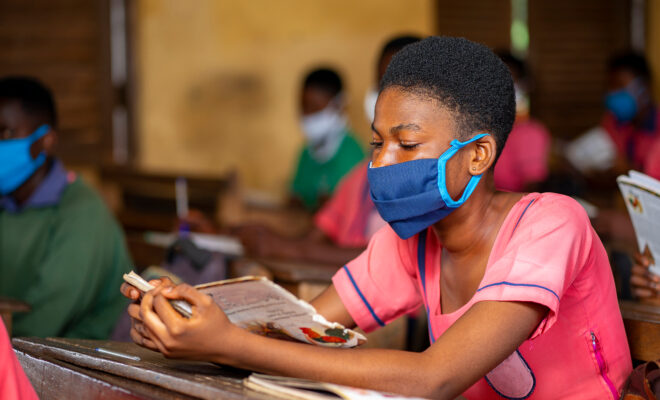The financial impact of the pandemic on higher education

We do not yet have sufficient data to measure the real impact of the pandemic on the financing of higher education in Latin America. Until they arrive, we can make do with some indications gathered by our Institute and with the lessons learned from previous crises to launch some hypotheses.
But before doing so, it is worth remembering that, before the pandemic arrived, the question of financing was far from being well resolved and that the challenges that existed are not only still pending but have become more complex. It will suffice to cite three. The first challenge was, and still is, funding itself, not only from the point of view of volume, reflected for example in the average investment per student, which has not grown in the region, but also from its very architecture, particularly in terms of public intervention in the financing of institutions and students or, if one prefers, of supply and demand. In this sense, it does not seem that any country in the region found itself in a situation of equilibrium, as evidenced both by student demonstrations, especially significant on issues such as public fees or indebtedness (Chile and Colombia), and by teachers’ unions (Argentina), as well as the positions of university associations.
The second challenge was, and still is, demographic change. Unlike other educational subsectors, the so-called demographic bonus did not seem to bode well for higher education: although there is plenty of room for growth because coverage rates could increase substantially, since the average gross rate in the region is barely 25%, the potential reduction in enrollment and, therefore, in demand could have negative consequences for university financing, especially when part (or all) of their income depends on the number of students entering, as is the case in many of the region’s public higher education institutions.
Finally, the third challenge was, and still is, the relevance of the offer and the perception that young people have of it. This was happening in a context in which the economies of the region, before the pandemic, seemed to offer much more attractive jobs, albeit precarious or poorly paid, than the prospect of several years of training with uncertain future prospects. The fact that the overwhelming majority of young people entering higher education opted for programs that did not respond to the needs of the labor markets did not help either. This explained, at least in part, the paradox that while the number of secondary school graduates grew, the demand for higher education did not increase: a growing number of young people simply chose not to start higher education studies or to postpone them temporarily – a phenomenon that has been well documented in the United States but also more recently in Colombia.
If there is one thing we can be sure of, it is that the pandemic did not solve any of these three challenges and that it generated some new ones for the financing of higher education from both the demand and supply perspectives. Just as it is difficult to make valid statements for the countries of the region as a whole, which are far from being homogeneous in this area, neither is it easy to refer to higher education, or its students, without segmenting them because the behavior, for example, of public institutions in this new context is not necessarily the same as that of private ones, with their enormous variety; likewise, what can be predicted for graduate students in the post-pandemic is not necessarily valid for undergraduates. Let’s look at it in detail.
Let’s start with the students. Everything points to the fact that during the pandemic, students were lost for multiple reasons: from technological disconnection to financial urgency, without forgetting the socio-emotional problems derived from isolation and pedagogical proposals that, with the urgency, did not intend anything other than guaranteeing continuity. The question is whether these losses will be added to those already occurring, with the consequent reduction in fee income. The paradox that we have learned from previous economic crises is that education, in contexts of distressed labor markets, becomes a refuge for those young people who can withdraw, totally or partially, from the labor market, for a certain period of time. In the light of what we know from other crises, the figures for the increase in this demand for refuge may well compensate for the losses of those who cannot continue to afford higher education, or even exceed them. But, inevitably, there is a derivative in terms of equity that should not be neglected: without better financial support mechanisms for students, many of the vulnerable will not return to the classroom.
The case of graduate students will probably follow a different path. Everything suggests that, after the experience of the pandemic, the valuation of distance programs today has improved considerably, both on the side of the students and even on the side of the companies that hire them. In short, there is a consolidation of the demand for more flexible forms of postgraduate higher education, including purely virtual, hybrid or hyflex programs, which are probably only within the reach of business schools or high-value and high-priced programs due to the investment required. For those universities that have competitive graduate programs, this is undoubtedly good news, especially if they extend their offerings internationally.
Finally, international student mobility is also being affected. This is another example of how, after the slowdown imposed by the pandemic, previous flows are gradually recovering, with the added bonus of having gained the experience of promising virtual mobility.
Let us now turn to the institutions. First of all, one must ask whether the provision of higher education will remain the same as it was before the pandemic because a change of model may have important implications of all kinds, including financial ones. In general, it would seem clear that young undergraduates need and want to return to a primarily face-to-face model, while postgraduates prefer flexibility. The commitment to a change in the offer, supported by solid technological services and new pedagogical designs, will not be possible without a significant investment that has already begun to be made during the pandemic. The paradox is that, just as in graduate programs it is possible to imagine a return on investment, in undergraduate programs unexpected effects have begun to be noticed, such as, for example, that classroom attendance decreases when students do not find added value in attending the same lessons in the presence of those already available on the institutional platform. This is one more reason that supports the idea that investment in technology without pedagogical support is easy, but counterproductive. The glittering investments in buildings and classrooms have probably reached their ceiling and will be replaced by technological ones, at a time when platform providers are already trying to claim profits for services that initially seemed free and where the price to pay is data. Nothing is free.
Because of their dependence on tuition fees, private institutions took a greater financial hit during the pandemic. The weakest, in terms of quality and financing, had serious difficulties in generating pedagogical continuity solutions and, when they did, they had already lost staff and, in addition, students did not easily accept to continue paying the same price for a merely virtual solution that was difficult to digest. Although data are scarce, in those countries where there is still a private supply that can operate without external quality requirements, centers were closed and some business groups took advantage of the situation to buy others at low prices, as in Peru. Where governments made efforts to guarantee a minimum quality threshold by prescribing operating criteria during the pandemic, private institutions were forced to invest in equipment and solutions, increasing their indebtedness. The large private universities, some of which are well established financially in countries such as Colombia, Chile, Mexico or Peru, were able to take the blow not without losses but were able to take advantage of their resources to reposition themselves, with proposals that attempt to consolidate their leadership position. Finally, private offerings entirely at a distance prospered thanks to the drive of groups from outside the region that established themselves strongly, making acquisitions of small local institutions. In short, the varied panorama of private higher education has felt the blow, but its response has been strongly marked by its different levels of capitalization and its technological and pedagogical capabilities.
The case of public universities is quite different. Since in the region their fees usually represent a smaller percentage of income (and in some countries, such as Argentina and Uruguay, they do not even exist), the blow was less severe. Sooner or later, practically all the governments in the region generated additional funding opportunities during the crisis not only to guarantee pedagogical continuity but also to generate student support mechanisms that, in many cases, public universities had already deployed, for example, to improve connectivity or offer direct financial aid (as in Chile, Colombia and Peru). In general, it can be said that public universities felt relatively well supported by their governments during the pandemic.
The post-pandemic scenario is, therefore, full of contrasts. Governments must decide what priority to give to higher education in a context of economic recession and social crisis, with heavy indebtedness in public health and the awareness that it is necessary to act, above all, to restore normality in the school sector, where the economic effects of learning losses have been amply estimated. The changes in political orientation in many countries of the region (Mexico, Argentina, Peru, Chile, Colombia and now Brazil) generated expectations of increased public investment in higher education, partly to democratize access and partly to solve the serious problem of indebtedness. The promises of the creation of new universities, of progressive universal free education and of aid focused on under-represented or vulnerable groups have come up against an economic context that is not very favorable to the expansion of public spending and is unlikely to change, in a continent where, according to ECLAC, the country that will experience the greatest economic growth will be Venezuela.
It is important that in this context the universities raise their voices. They should start by reminding public opinion and governments that during the pandemic they turned not only to their students but also, through their research and clinical activities, to finding solutions to the crisis. And secondly, that higher education is not just another source of expenditure that only affects a minority of the youth population, but an important lever for economic recovery and transformation and social mobility and cohesion. The governments of the region have before them the opportunity to see higher education as an investment in the future with practically immediate returns. And by their real response to this opportunity, not by their proclamations, they should be judged.
Author
Francesc Pedró
Director of UNESCO IESALC
RELATED ITEMS








